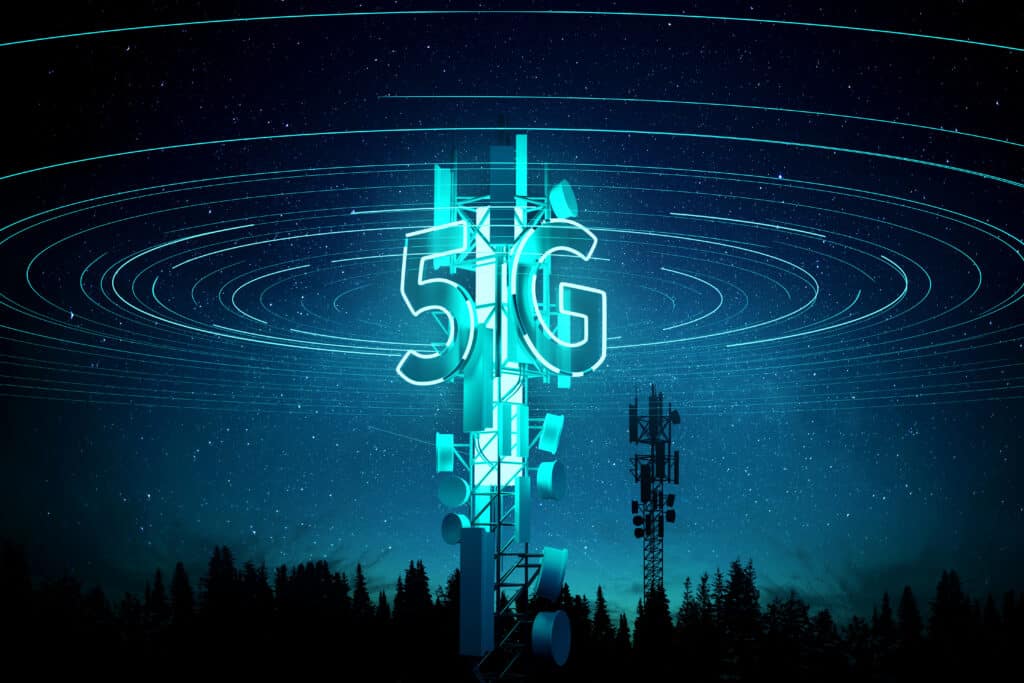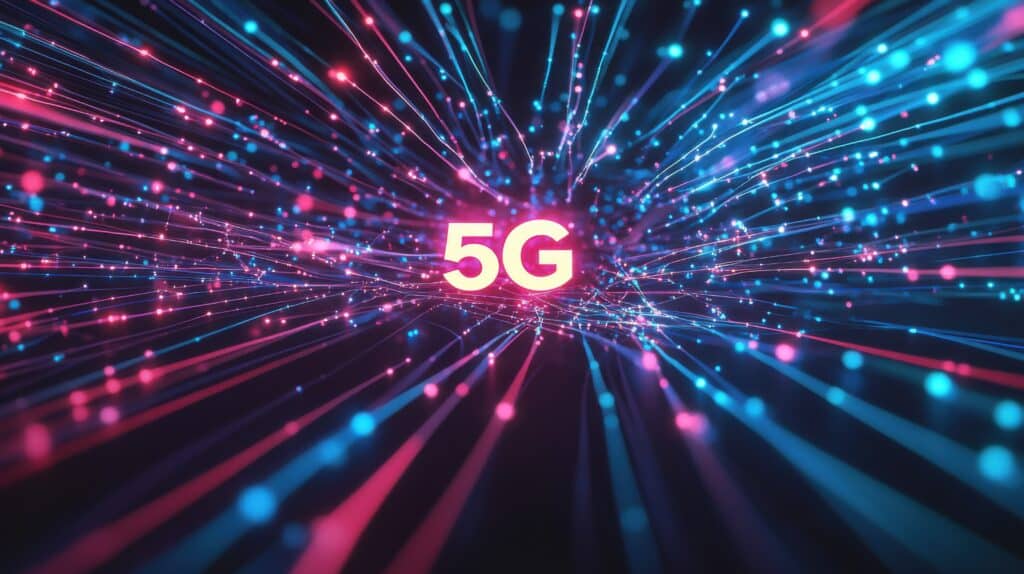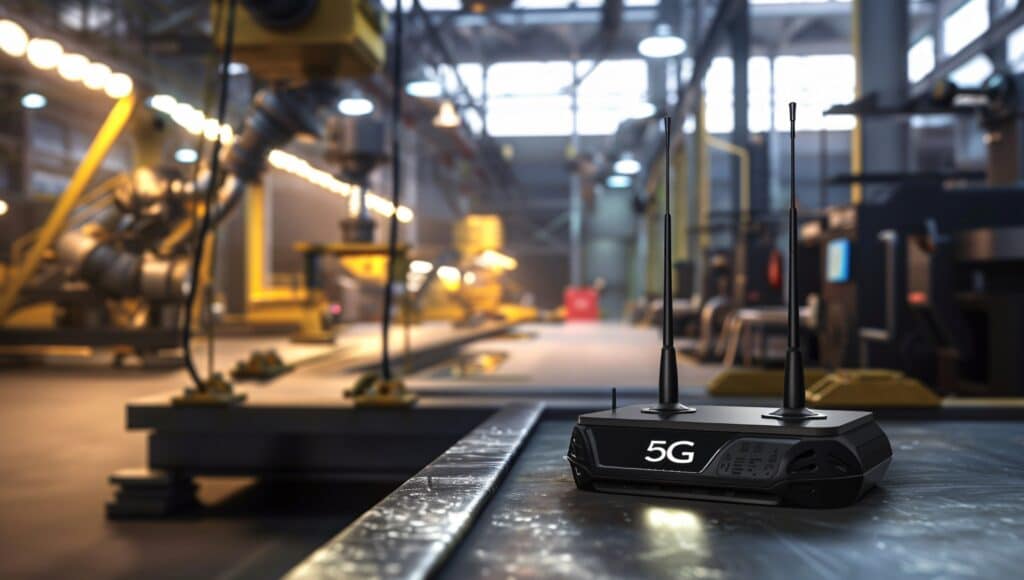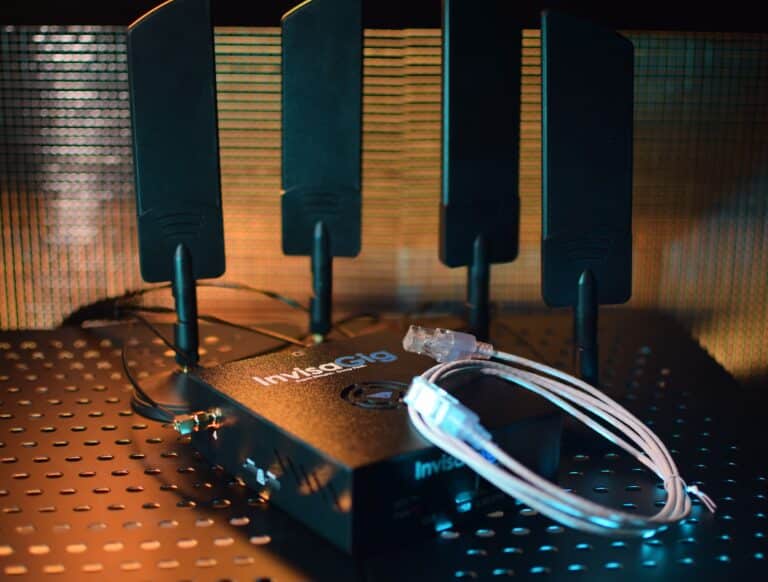2024 Edition: Making the Perfect Network
Creating the Optimal Home or Business Network with the InvisaGig Cellular Modem
Simple, Fast, & Reliable: Revolutionizing Internet Connectivity with InvisaGig and Modern Network Technologies
Building the Perfect Home or Business Network with Cellular Internet: Executive Summary

In today’s increasingly connected world, access to fast and reliable internet is more important than ever. However, many individuals and businesses are still grappling with subpar connectivity options. Traditional wireline internet solutions like cable and DSL can often prove unreliable due to poor infrastructure maintenance, while fiber optic installations can be expensive or simply unavailable in many regions. Satellite connectivity is an alternative, but it can present reliability, latency, or throughput concerns depending on weather conditions. All these options have also become increasingly expensive due to lack of competition in the market. Viable cellular connectivity options do exist, but their utility can often be limited due to unreliable or difficult to configure equipment.
Fortunately, there is another option — InvisaGig, which integrates cutting-edge 5G cellular connectivity into a plug and play solution with powerful, yet easy to use features. Combining the dual-SIM capable InvisaGig with the utility of a full featured firewall/router/VPN platform, customizable DNS services, and the latest WiFi 7 access points for optimal wireless throughput can elevate residential or branch office connectivity to the next level. The combined synergies of these technologies can provide practical solutions to common challenges, such as Carrier-Grade NAT (CGNAT), typically associated with cellular internet Service Providers (ISPs), without any special plans or add-ons required from the cellular provider. By leveraging the advancements of 5G networks, cloud servers, and agile VPN tunneling, this setup offers an affordable, fast, and reliable internet connection suitable for both personal and business use.

The 5G Cellular Access Device To Anchor Your Networking Stack: An Introduction
Internet connectivity has become indispensable for both individuals and businesses. However, achieving a fast and reliable connection in every context is challenging. Many users face either unreliable wireline services, expensive alternatives like fiber or satellite, or limitations such as poor-maintained infrastructure in their area.
This paper explores an innovative solution in which a 5G cellular access device, augmented with a tailored networking stack, provides a robust and high-speed internet connection suitable for a wide range of applications. We’ll break down the technical aspects of this solution while demonstrating why its lower cost and higher reliability make it an ideal alternative for homes, offices, and remote locations.
Replacing Traditional Internet Connection Options With A 5G Cellular Access Device: An Analysis
The goal of this article is to demonstrate how a 5G cellular access device can replace traditional internet options, solve connectivity pain points related to performance, cost, and availability, and highlight how integration with pfSense and WireGuard tunnels allows for optimized use cases in both rural and urban settings. We aim to show readers the benefits that stem from adopting such a hybrid, versatile networking setup.
The Current State Of Internet Connectivity in 2024

Issues With Traditional Wireline Internet Connections
Cable and DSL internet are still one of the most common forms of connectivity in many homes and offices. However, they increasingly suffer from several reliability, speed, and cost issues:
- Unreliable Performance: Frequent outages due to shared bandwidth within an area.
- Limited Upload Speeds: Cable often provides asymmetric download/upload rates, which can affect business needs such as cloud backups, video conferencing, and large file uploads.
- Infrastructure Dependent: Physical deterioration of cable infrastructure and hardware limitations in certain geographic regions.
Limitations Of Fiber & Satellite Internet Options
- Fiber: Offers excellent speeds but comes with expensive installation costs and geographic restrictions. Not all areas have access to fiber, and laying new infrastructure can take months or even years.
- Satellite: Latency and throughput can be inconsistent depending on weather patterns and geographic location, making it unsuitable in some cases for real-time applications like online gaming or video conferencing. It has become increasingly expensive as providers continue to raise service plan prices to support costly satellite deployment and maintenance.

The Role of 5G Technology As A Wireless Internet Alternative
5G Key Benefits
First-Party 5G Gateways

Key Pain Points Of First-Party Equipment
- Lack of configurability: Many 5G gateways give the end user almost no configuration options locking them out of settings which could be fine-tuned to enhance the reliability and speed of the connection. In many cases this includes the inability to turn off included Wi-Fi radios which can create undesired interference and loss of throughput for existing Wi-Fi networks already being broadcast.
- Restrictive form factor: Much of the carrier provided equipment is designed to be installed indoors on a horizontal surface using only its internal antennas for reception. In many cases this will not provide the best possible connection to available cellular signals.
- Impaired uptime reliability: Just like many traditional wireline cable and DSL modems, the gateways provided by cellular carriers frequently require manual user intervention to power cycle them to restore connectivity if the connection drops or becomes unstable.
Limitations Of Fiber & Satellite Options
- Fiber: Offers excellent speeds but comes with expensive installation costs and geographic restrictions. Not all areas have access to fiber, and laying new infrastructure can take months or even years.
- Satellite: Latency and throughput can be inconsistent depending on weather patterns and geographic location, making it unsuitable in some cases for real-time applications like online gaming or video conferencing. It has become increasingly expensive as providers continue to raise service plan prices to support costly satellite deployment and maintenance.

Third-Party 5G Gateways
Key Pain Points Of Third-Party Equipment
- Real costs of ownership: While both hobbyist and Enterprise level 5G gateway equipment exist in the market; they both often leave users dissatisfied. Hobbyist equipment may be inexpensive at the outset but can present a steep technical learning curve having the potential to take up a great deal of time as users need to research their own solutions to any build or ongoing support issues they may encounter. Conversely, Enterprise equipment can provide good documentation and support, but this comes at a much higher monetary cost both upfront and ongoing.
- Non-intuitive user interface: While some third-party devices may advertise a rich feature set, often the desired functionality requires deep technical knowledge and/or training to unlock its full potential.
- Unnecessary complexity: Many devices may include full router and firewalling capabilities enabled by default which introduce an additional layer of complexity to the overall network when users already have their own router and/or firewall and simply need an Internet connection.
The InvisaGig Solution

InvisaGig 5G Cellular Adapter
Unlike 5G gateways, InvisaGig is reliable, easy to install, and readily available without requiring time-intensive training to configure. Leveraging the simple text-based, menu-driven UI, connecting to any cellular provider is a breeze. Despite this simplicity, InvisaGig contains a powerful feature set that enables any user to dial in a fast, stable connection under many different conditions and locales. With dual-SIM capability to connect to multiple cellular networks on demand, InvisaGig is equal parts simple and versatile.
InvisaGig also features remote administration access via Tailscale which enables both individual and MSP customers to access and administer their devices remotely. Additional functionality is also available to help MSPs retain InvisaGig units deployed under hardware leasing scenarios.
pfSense Router/Firewall
pfSense appliances supporting various network workload requirements can be purchased directly from Netgate, the company behind pfSense. However, what makes pfSense particularly compelling is their wide support of third party x86 based hardware and economical license model allowing users and companies to re-purpose existing hardware investments as powerful router/firewall combos. pfSense offers tremendous flexibility, advanced security options, and high performance. One or more InvisaGig 5G Cellular Bridges can be used as WAN connections under pfSense to support all available LAN clients.
Unlike conventional SOHO and edge routers, pfSense can be configured for advanced networking scenarios, QoS (Quality of Service) for prioritizing critical traffic, and granular firewall controls. Additionally, pfSense acts as a solid backbone for network management, offering:
- Custom filtering and firewall rules
- Load balancing and failover configurations
- Modern VPN configuration, including advanced WireGuard tunnel support
TP-Link Omada Wi-Fi Access Points
As increasingly more LAN clients are connecting to networks via Wi-Fi it is imperative that the access points connecting them be fast, stable, and reliable making the most out of the underlying InvisaGig 5G Internet connection. While there are myriad options available, the TP-Link Omada line of Wi-Fi 6 and 7 access points deliver a solid product at a favorable intersection of price vs. performance.
Omada is a compelling product line because it provides the option of a cloud-managed ecosystem if that is what the use case requires, but it does not force this cloud solution on anyone who does not want it. Access points in this product line can be operated individually or on a per-site basis and many feature the resources to support increased client density so less access points are needed in an overall deployment.
For businesses or homes with high device density, the new Omada Wi-Fi 7 offerings’ ability to handle congestion more effectively makes it an excellent pairing with InvisaGig and pfSense, ensuring utmost performance and minimal slowdown even as more devices connect.
Solving CGNAT Problems With pfSense & WireGuard

One common challenge with wireless ISPs is the use of Carrier-Grade NAT (CGNAT) or carrier-side firewalling, which can make services like inbound connections, VPNs, or web hosting problematic. To resolve this issue, WireGuard can be used to tunnel select traffic out through a cloud server which has been assigned a dedicated public IP address. This allows for seamless remote access and the ability to run Internet-facing services that require an externally routable IP address.
Not only does this solve the issue of CGNAT and carrier firewalls, but it also secures the internet connection for high-priority, sensitive applications requiring encryption and privacy.

Use Cases: Who Can Benefit Most From InvisaGig?
Remote & Rural Locations
Many rural households and businesses have limited access to high-speed options, and dragging fiber lines to remote locations is notoriously expensive and slow. The InvisaGig solution circumvents these issues by offering the performance of fiber without the complex physical infrastructure.
Temporary Installations
For businesses that require temporary or mobile setups — such as construction sites, event spaces, and mobile offices — a mobile network stack built on InvisaGig connectivity is ideal. With plug-and-play functionality and quick provisioning, solid and stable internet can be deployed at almost any site on short notice.
Small & Medium Businesses (SMBs)
SMBs in need of flexible, fast internet often find traditional ISPs to be slow, unreliable or cost-prohibitive. A 5G cellular adapter such as InvisaGig allows them to quickly scale, providing reliable, high-performance internet at a fraction of the cost of dedicated fiber installations. Combined with pfSense and WireGuard, they get enterprise-grade networking solutions (including those that require dual-SIM functionality) all at a reasonable cost.
Total Cost Of Ownership: InvisaGig vs. The Competition

When comparing the upfront and recurring costs of an InvisaGig based solution with alternative solutions like fiber, cable, satellite, and 5G gateways, clear benefits emerge in favor of the InvisaGig approach, especially when fiber installation costs and satellite service costs are considered. Additionally, as 5G continues to mature and make further inroads in traditional wireline and fiber markets, pricing for data service plans is forecasted by many industry analysts to remain competitive.
Conclusion: Modular Connectivity, Cost Savings, & Flexibility
The future of internet connectivity is wireless, and InvisaGig represents the next evolution of fast, reliable network access. When paired with powerful networking tools like pfSense, WireGuard, and high-performance Wi-Fi access points from vendors with flexible ecosystems such as TP-Link Omada, InvisaGig delivers a versatile, cost-effective solution that meets the needs of both individuals and demanding businesses.
Reliable, high-speed internet access is no longer the domain of expensive fiber or satellite services. With this solution, users can enjoy performance comparable to traditional options while avoiding their pitfalls — leading to better connectivity, lower costs, and superior flexibility.
Whether you are in a rural area, seeking temporary internet access, or looking for a high-speed, cost-efficient alternative for your business, you no longer need to rely on expensive and error-prone solutions. By adopting a connectivity solution with InvisaGig at its core, you can take control of your internet connection in a way that is both future-proof and scalable. Contact InvisaGig Technologies today to learn more and to discover how cutting-edge solutions like these can be just the right fit for your needs.